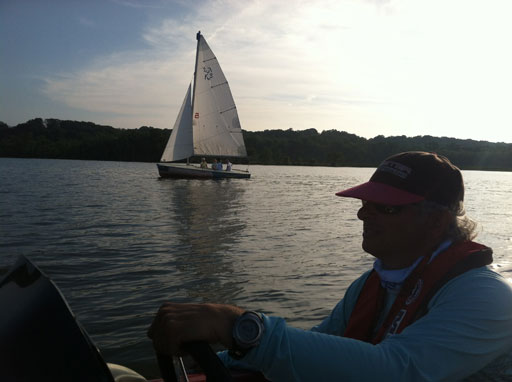
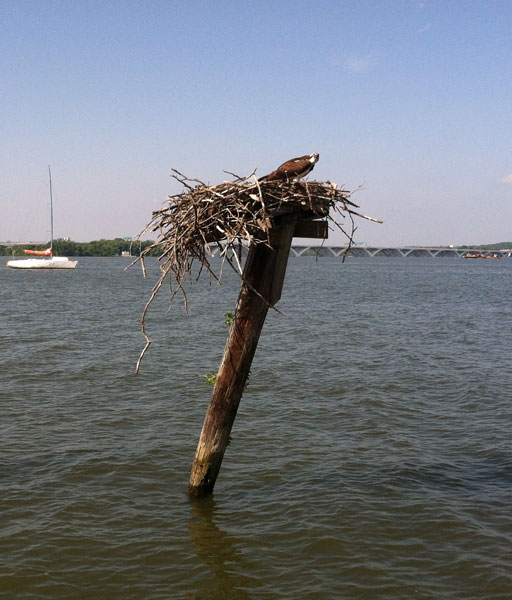
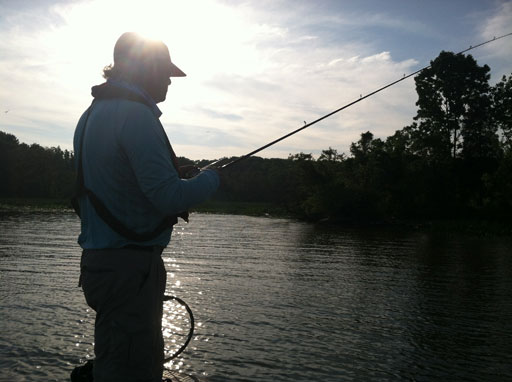
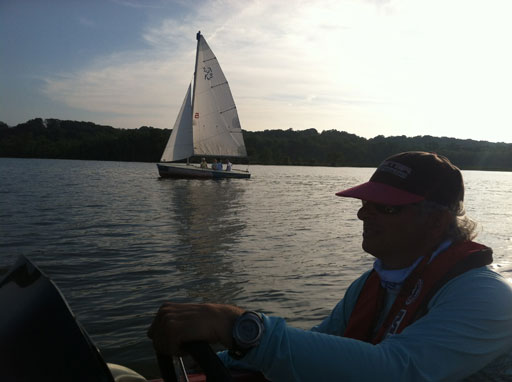
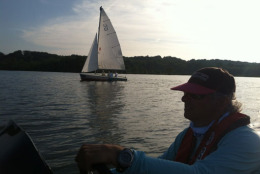
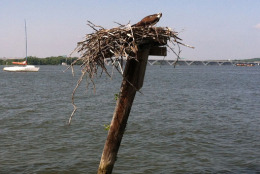
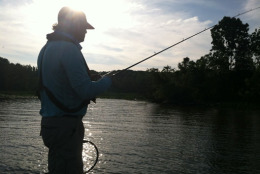
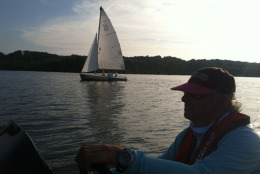
ALEXANDRIA, Va. – The health of a river is evident in the heath of its fish. And while the Potomac River has to make strides before its wildlife is considered healthy, experts say it’s getting better.
Just last year, the Potomac River was named the most endangered river in the U.S. by the group American Rivers.
Capt. Steve Chaconas, a Potomac River bass fishing guide with 20 years experience, is on the river almost every day and knows the river’s changes.
“Bass fishing this year has been very, very good,” Chaconas says.
“The fish look healthy, they fight, (and) everybody’s excited when they catch one.”
Most days you’ll find Chaconas on the river, leading clients to the best spots for catch-and-release.
“One of the surprising things about the largemouth bass is that they’re not only healthy, but when we do see wounds on them, they come from osprey. You’ll see the talon marks from osprey on the sides of a bass that got away,” he says.
“It’s the lesions that sometimes bring some worry, (but) we don’t see a lot of those right now.”
Lesions, or sores on fish, can be caused by things like parasites, fungi and bacteria.
The effect of snakehead fish
The invasive northern snakehead fish, which first appeared in the region more than a decade ago, continues to grow in number and in size in the Potomac, Chaconas says.
“We’re catching monster-size snakeheads, anywhere from 10 to 15 pounds,” he says.
A 17-pound-6-ounce northern snakehead fish was caught Saturday in Aquia Creek, a Potomac River tributary. If the catch is certified, it would be a new world record.
The current world record snakehead was caught in Japan and weighed 17 pounds and 4 ounces. The man who made the big catch in Aquia Creek has started the certification process.
Last year, an even larger snakehead weighing about 18 1/2 pounds was caught in the area, but that angler did not go through the certification process.
If a fisherman catches a northern snakehead in D.C. waters, the city says he should immediately kill it. Nearby jurisdictions have similar rules.
“Virginia and Maryland encourage you to kill snakeheads. The difference is that when you catch one in Virginia, and you want to take it home, you want to leave the water with it, you have to let Virginia know. You want to take it home to eat it, that’s fine as long as it’s dead. You’re not allowed to possess a live snakehead,” says Chaconas.
In Maryland, the rules differ slightly.
“They say you don’t have to report it. Just take the snakehead home as long as it’s not alive. It is a federal violation to take a snakehead across state lines alive,” Chaconas says.
When the northern snakehead was first detected in the region, there were scary predictions that the fish would seriously damage the environment. But, Chaconas says, so far so good.
“There is no evidence, no scientific evidence, that the snakehead are having any impact on the fishery itself,” he says.
“Right now the only downside, if it is a downside, is that areas where we were catching largemouth bass by themselves now, a few snakeheads are being mixed in. So it’ll interrupt your day, but it won’t ruin it. We’re still having fun catching them, and there’s plenty of room for all these species to coexist,” he says.
“We would be hard-pressed at this time to say with any validity that the snakehead at some point will dominate this fishery. We can’t say it scientifically, and anecdotally it hasn’t accelerated to that point,” Chaconas says.
A look at a large mouth bass
What’s missing from the river
There is something that does have Chaconas concerned.
He says something vital is now missing in the river from D.C. to areas south of Mount Vernon.
“The thing that’s really different about this year is the fact that we have no sub-aquatic vegetation. That’s the bad news, because sub-aquatic vegetation serves two purposes. It clears up the water, which allows for more sub-aquatic vegetation growth, and on top of that, it provides habitat not only for the fish, but for the bait that the fish eat themselves,” Chaconas says.
“Those big grass flats that we used to see driving over the Woodrow Wilson Bridge, north and south of the bridge, they’ve been gone for about five years now since the bridge construction, and the construction of National Harbor.”
As a result, he’s had to change his ways.
“I used to fish these grass beds, and I used to have techniques that were meant for the grass beds. But now I’ve gone to having to fish other things — rocks, wood, trees that have fallen in the water. I’m fishing more docks. So I’m fishing those areas now where the fish are now competing for more cover. And there are not as many fish in these particular areas, so I have to move around a lot more.
“When there was grass, I could just sit in a small grass bed, fish it all day long, and had almost an endless supply of fish,” Chaconas says.
Unique to the Potomac River: Fish with beauty marks
Some fish still unsafe to eat
Many fish in the Potomac River are not safe to eat, a fact that hasn’t changed in years.
While aboard his boat, Chaconas pulled out a document from the D.C. Department of the Environment.
“They say, ‘Fish from D.C. waters may contain PCBs and other chemical contaminants. Do not eat catfish, carp or eel from these waters.'”
The advisory goes on to say for safety’s sake, you should limit your intake to one half-pound per month of largemouth bass, and one half-pound per week of sunfish or other fish caught in the Potomac and Anacostia rivers and their tributaries.
Snakeheads are among the safest fish in the Potomac to eat because they grow too quickly to absorb many of the bad things that are in the water, Chaconas says.
Snakeheads are considered to be a tasty fish, and they’re turning up on more and more restaurant menus in the region.
“I give a local chef some of my snakehead to experiment on, Doug Laporta at Laporta’s in Alexandria,” Chaconas says.
On a scale of one to 10, Chaconas rates the river a seven.
“And that’s primarily because there are still some major issues,” he says.
“There’s the trash that’s ending up in the Potomac River. When you have plastic bottles, you have trash and other debris, it leaches chemicals and dyes and other things into the river which are not healthy for anybody. That’s No. 1,” he says.
“No. 2, we have a lot of people who are still putting things into the water they’re kind of unaware of. It’s the homeowner. They’re still using too many chemicals on their lawn, they’re freely using too many pesticides when they’re trying to treat something at their house. It all ends up in my workplace, it ends up here in the Potomac River and that’s not good for anybody at all,” Chaconas says.
The river still contains pollution first left here years and years ago, he says.
“That’s the scary thing about this. You look at stuff that we did 30 years ago, it’s with us today. It’s going to be with us 30 years from now unless we find a way to get rid of this stuff, and there’s nothing on the horizon that will do it,” Chaconas says.
“So once a fishery is contaminated, while it may look good, while we may catch fish, while we may have a great recreational waterway, you can’t eat the fish.”
Michelle’s catch-and-release
Related Stories:
- How Blue Plains treats wastewater
- Anacostia River: Ugly duckling or blossoming flower? (Video)
- Troubled Waters: About this series
- More Troubled Waters
Follow @WTOP on Twitter.







